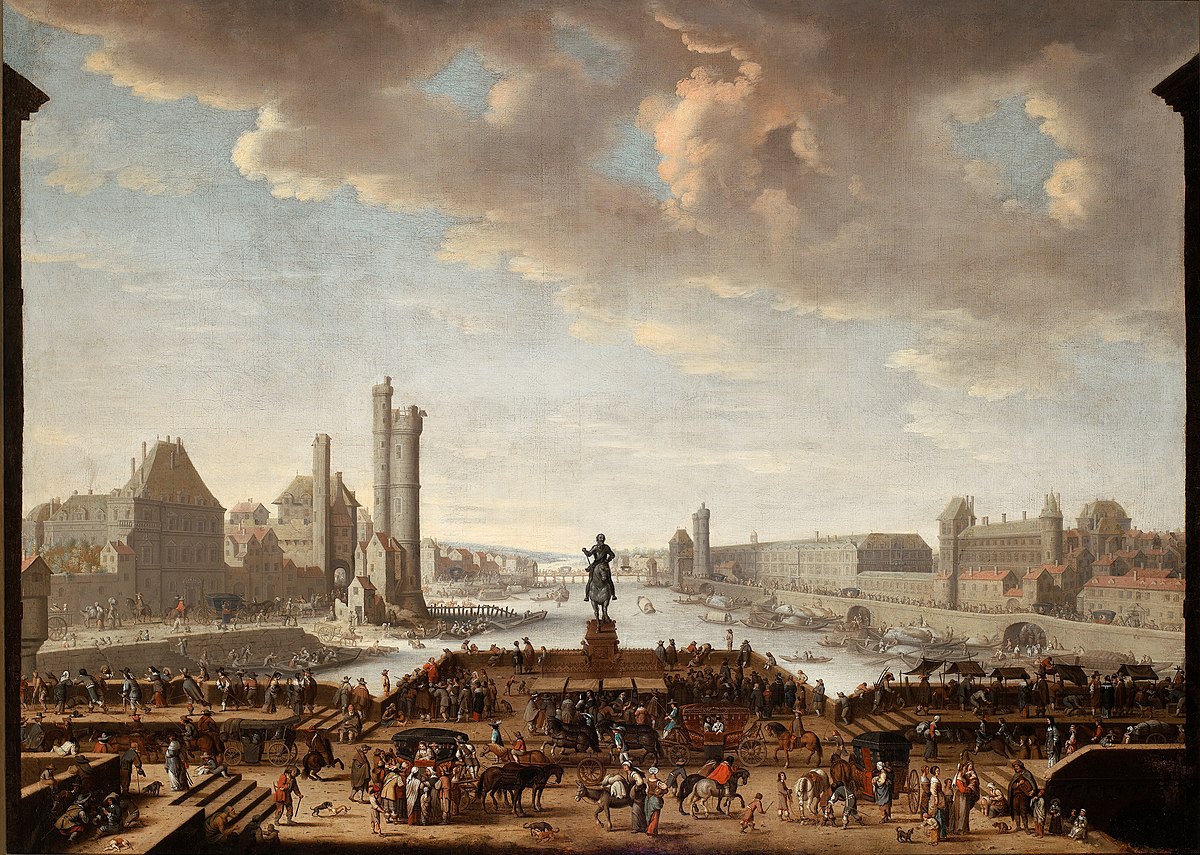
Paris under Louis XIII
Palais-Royal, Paris, FranceLouis XIII was a few months short of his ninth birthday when his father was assassinated. His mother, Marie de' Medici, became Regent and ruled France in his name. Marie de' Medicis decided to build a residence for herself, the Luxembourg Palace, on the sparsely-populated left bank. It was constructed between 1615 and 1630, and modelled after the Pitti Palace in Florence. She commissioned the most famous painter of the period, Peter Paul Rubens, to decorate the interior with huge canvases of her life with Henry IV (now on display in the Louvre). She ordered the construction of a large Italian Renaissance garden around her palace, and commissioned a Florentine fountain-maker, Tommaso Francini, to create the Medici Fountain. Water was scarce in the Left Bank, one reason that part of the city had grown more slowly than the Right Bank. To provide water for her gardens and fountains, Marie de Medicis had the old Roman aqueduct from Rungis reconstructed. Thanks largely to her presence on the left bank, and the availability of water, noble families began to build houses on the left bank, in a neighborhood that became known as the Faubourg Saint-Germain. In 1616, she created another reminder of Florence on the right bank; the Cours la Reine, a long tree-shaded promenade along the Seine west of the Tuileries Gardens.
Louis XIII entered his fourteenth year in 1614 and exiled his mother to the Château de Blois in the Loire Valley. Marie de' Medici managed to escape from her exile in the Château de Bois, and was reconciled with her son. Louis tried several different heads of government before finally selecting the Cardinal de Richelieu, a protege of his mother, in April 1624. Richelieu quickly showed his military skills and gift for political intrigue by defeating the Protestants at La Rochelle in 1628 and by executing or sending into exile several high-ranking nobles who challenged his authority.
In 1630, Richelieu turned his attention to completing and beginning new projects for the improvement of Paris. Between 1614 and 1635, four new bridges were built over the Seine; the Pont Marie, the Pont de la Tournelle, the Pont au Double, and the Pont Barbier. Two small islands in the Seine, the Île Notre-Dame and the Île-aux-vaches, which had been used for grazing cattle and storing firewood, were combined to make the Île Saint-Louis, which became the site of the splendid hôtels particuliers of Parisian financiers.
Louis XIII and Richelieu continued the rebuilding of the Louvre project begun by Henri IV. In the center of the old medieval fortress, where the great round tower had been, he created the harmonious Cour Carrée, or square courtyard, with its sculpted facades. In 1624, Richelieu began construction of a palatial new residence for himself in the center of the city, the Palais-Cardinal, which on his death was willed to the King and became the Palais-Royal. He began by buying a large mansion, the Hôtel de Rambouillet, to which he added an enormous garden, three times larger than the present Palais-Royal garden, ornamented with a fountain in the center, flowerbeds and rows of ornamental trees, and surrounded by arcades and buildings. In 1629, once the construction of the new palace was underway, land was cleared and construction of a new residential neighborhood began nearby, the quartier Richelieu, near the Porte Saint-Honoré. Other members of the Nobility of the Robe (mostly members of government councils and the courts) built their new residences in the Marais, close to the Place Royale.
During the first part of the regime of Louis XIII Paris prospered and expanded, but the beginning of French involvement the Thirty Years' War against the Holy Roman Empire and the Habsburgs in 1635 brought heavy new taxes and hardships. The French Army was defeated by the Habsburg-ruled Spanish on August 15, 1636, and for several months a Spanish army threatened Paris. The King and Richelieu became increasingly unpopular with the Parisians. Richelieu died in 1642, and Louis XIII six months later in 1643.
